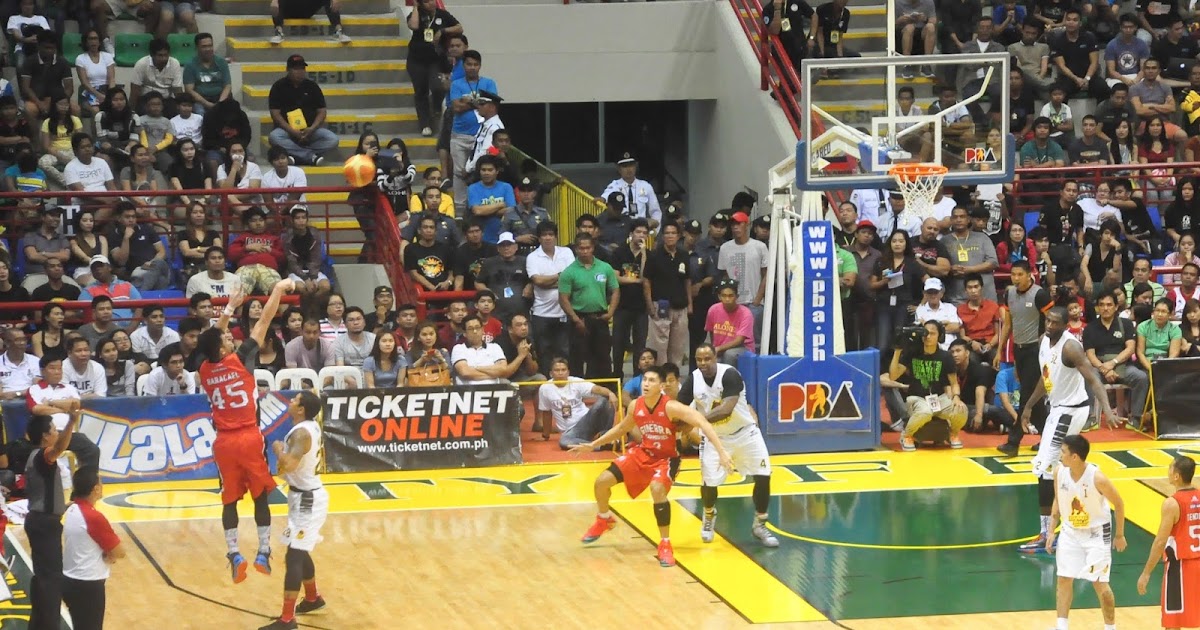Home »
Misc »
How to play man defense in basketball
How to play man defense in basketball
Man-to-Man Defense - Complete Coaching Guide
The traditional man-to-man defense is by far the most common defense in the game of basketball today.
This is especially true as players progress to a higher level of competition. In fact, due to the great outside shooting of professional players, every NBA team almost exclusively plays man-to-man defense.
The man-to-man defense involves all 5 defensive players on the court being allocated one opposition player who they’re accountable for defending whenever they’re on defense.
Of course, there will be times when players switch opponents or help each other on defense, but for the most part, each player is responsible for one player from the opposition.
Learning to be a great man-to-man defender is perhaps the most important skill for a player to learn during their years of youth basketball.
No matter what defense a player goes on to play at the next level or on another team, the skills they learn playing man-to-man defense will transfer.![]() Unfortunately, the same can’t be said for players that solely learn zone defense.
Unfortunately, the same can’t be said for players that solely learn zone defense.
If you’re coaching youth basketball, taking the time to teach your team man-to-man defense will go a long way to preparing them for the next level.
Strengths1. Every player needs to learn man-to-man defensive principles – It’s crucial that all youth players develop good man-to-man habits and understand man-to-man defensive principles.
2. Many Variations – There are many different ways to run your man-to-man defense depending on the team you’re playing against and what the strengths and weaknesses of your team are.
3. Preparation for future basketball – The better players get at man-to-man defense during their youth, the more opportunities they’ll get as they advance to higher levels of play.
Weaknesses1. There’s a lot to teach – Players will need to learn more defensive skills than if they were to play Pack Line defense or a zone defense.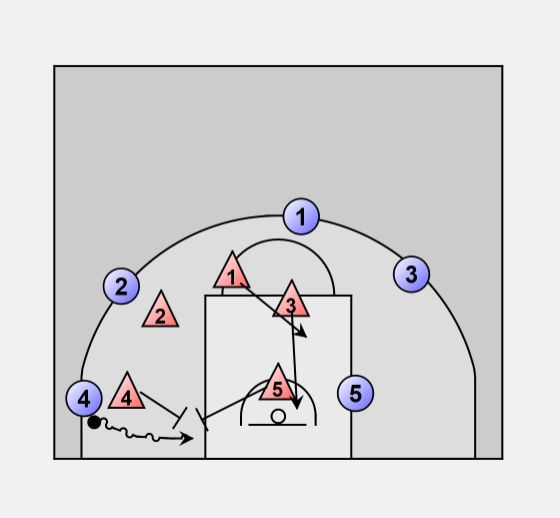 A lot of situations a player must know how to defend and where to position themselves.
A lot of situations a player must know how to defend and where to position themselves.
2. It will take time for your players to successfully run – One of the most common reasons for youth coaches running a zone is that they don’t have enough time to teach a man-to-man defense. They’re right. There’s a lot to learn and it will take time. But it’s definitely worth it.
3. Unable to hide weak players – In the man-to-man defense, everyone is held accountable for their role defending the basketball and being able to help and rotate when needed.
Man-to-Man Defense RulesWhile I’ve listened to coaches name hundreds of rules associated with the man-to-man defense, there are only 5 key rules that you need to teach to your players.
1. No Middle PenetrationIf you plan to run the man-to-man defense with your team, the next sentence is the most important thing you need to teach them…
Not allowing the opponent to into the middle of the lane from the top or the wings is the most important rule of man-to-man defense.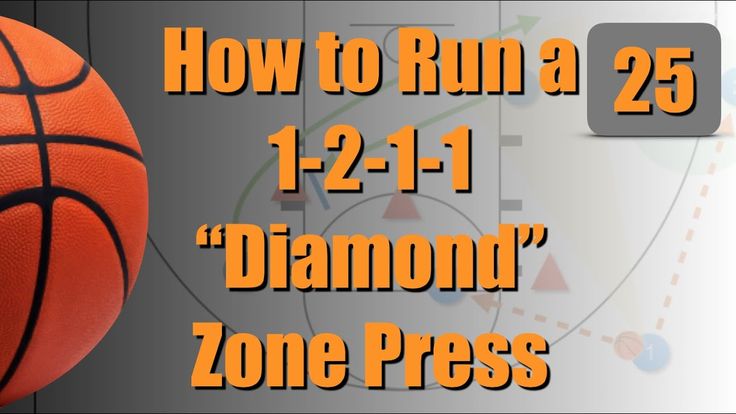
Instead, defensive players must use their stance and position themselves in such a way that the opposition can only dribble down the sideline and the baseline.
When an opposition player has the basketball at the top of the key, we direct them towards the sideline.
When an opposition player has the basketball on the wing, we direct them towards the baseline.
“Why the baseline instead of the middle?”
The reason we direct opponents towards the sideline and baseline is because it’s much easier to defend and rotate on a baseline drive than it is when a player drives into the middle of the lane.
This is because the help defenders roles and responsibilities are clear in regards to who is meant to help and rotate when the basketball is on the wings or in the corners.
When the basketball is driven into the middle, however, who is meant to help and who is meant to stay on their player becomes difficult to define which often leads to open scoring opportunities for the opposition.
2. No Ball-ReversalsHow many times have you heard a coach scream out “Reverse the basketball!” to their players?
A lot, I bet. Perhaps you’ve even done it yourself.
There’s a good reason for it if you have… it works for the offensive team!
The more you can get the defensive team to move and rotate, the more gaps will open up in the defense and the number of open scoring opportunities will rise.
So when you’re playing man-to-man defense, once the basketball has been passed to one side of the floor, we never want to allow it reverse back to the top or the opposite side.
The players defending the ball-reversal should be in 100% deny the entire time.
3. No Help from Defenders One-Pass AwayThis is the biggest difference between the Pack Line defense and the man-to-man defense.
In the Pack Line defense (which I often recommend), the players one-pass away from the basketball are helping in the driving lanes by taking away dribble penetration.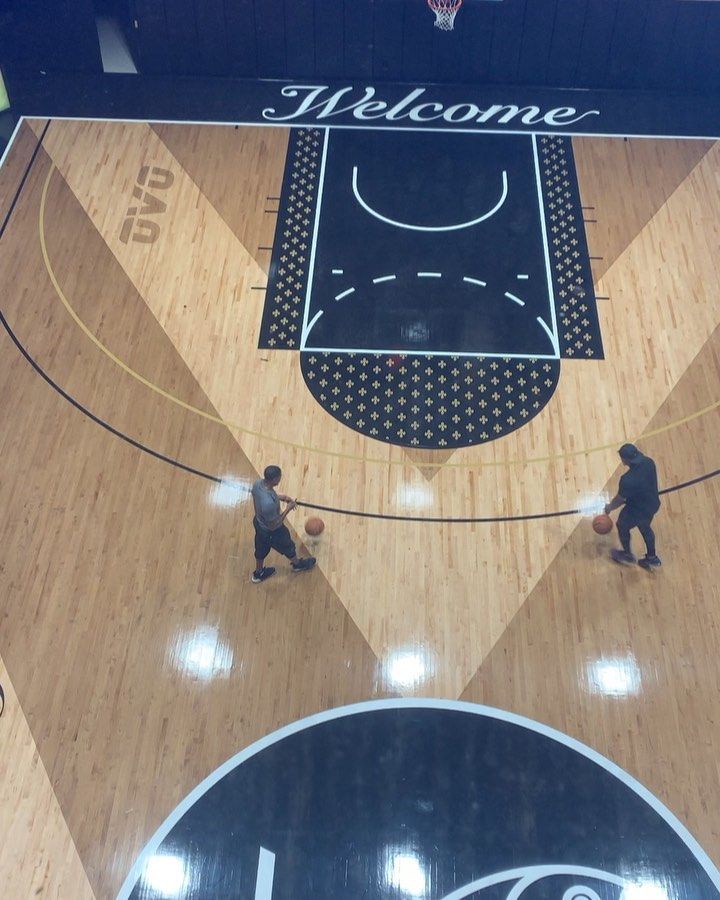 This allows the basketball to be passed around the perimeter.
This allows the basketball to be passed around the perimeter.
In man-to-man defense, since the players one-pass away from the basketball are denying the pass to their player, this leaves driving lanes open and means the on-ball defender is more accountable for keeping the player with the basketball out of the lane.
If an opposition player does attempt to drive down the middle, the player one pass away can quickly ‘stunt’ in their direction to get the offensive player to pick up the dribble, but they can never fully help.
If they do, it will often lead to an in-rhythm jumper or an offensive drive after a difficult closeout.
4. No Face CutsA defensive player must never allow their opponent to cut across their face in-between them and the basketball.
The ‘no face cuts’ rule will most commonly occur when the offense performs a ‘pass-and-cut’.
When an offensive player makes a pass to a teammate (they will still happen even if we’re denying them), the player defending the passer must immediately ‘jump to the basketball’ to force their opponent to cut behind them instead of in front.
This rule is also important when playing defense off the ball to stop players from flashing to the ball to receive a pass.
To put it simply, a defender must always stay between their man and the basketball whenever they’re playing off-ball defense.
5. Move When the Ball MovesThe final rule is to ensure that players are playing correct off-ball defense.
Whenever the basketball moves, every defensive player on the court should be adjusting their positioning on the court.
By keeping the importance of this in mind, players will learn that they must stay alert at all times and anticipate passes that they may be able to deflect.
As the great Don Meyer puts it…
“Positioning, anticipation, and technique create quickness. Therefore, you can always get quicker.” – Don Meyer
This is incredibly important because the difference between a steal and an open layup or a missed steal and a break down of the defense can be a fraction of a second.
Man-to-Man Defense Positioning BasicsThere are 3 roles you can be in when you’re on the court playing man-to-man defense…
1. On-ball defense
2. Deny defense
3. Help defense
In this section I’m going to talk about each of them in detail and what’s required of a player when they’re in each role.
Each player understanding all of these roles is crucial to good team defense. Being out of position by even a small amount can be the difference between blocking a shot or giving up an easy layup.
Positioning is everything.
On-Ball DefenseThe role of the on-ball defender in a man-to-man defense is to contain the offensive player while influencing them towards the sideline and baseline.
While containment is the ultimate goal regardless of where the ball is on the floor, if the defensive player is going to get beat, we want it to be towards the baseline instead of the middle.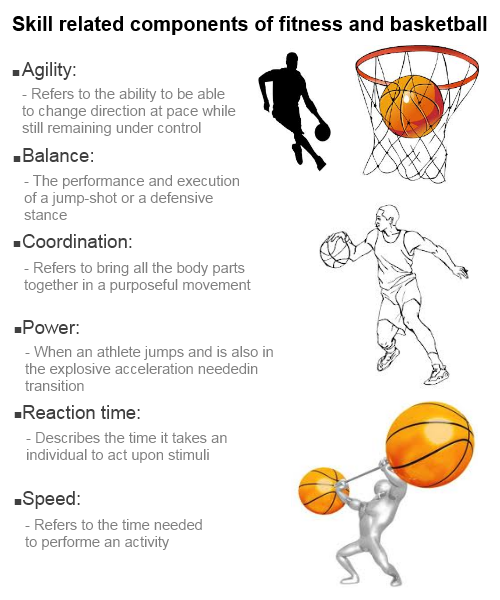 This is why the on-ball defender slightly overplays the middle.
This is why the on-ball defender slightly overplays the middle.
It’s imperative that all defenders on the court have the ability to contain their man consistently. If not, dribble penetration will break down your defense very quickly.
In fact, I never encourage on-ball defenders to reach in for steals unless the offensive player mishandles the basketball. There’s a far higher chance of them getting called for a foul than getting a steal.
Here are the 5 keys to playing great on-ball defense:
1. Desire to be a great defender.
The biggest differentiator between a great defender and an average defender is that a great defender wants to be a great defender.
All coaches must emphasize the importance of learning how to be a great defender and the benefits your players will get from the skill as they progress to a higher level of competition.
A player who desires to be a great defender is willing to stay down in a stance the entire possession, chase their opponent around the court, dive on any loose basketball to gain possession, take a charge if they’re in the proper position, etc.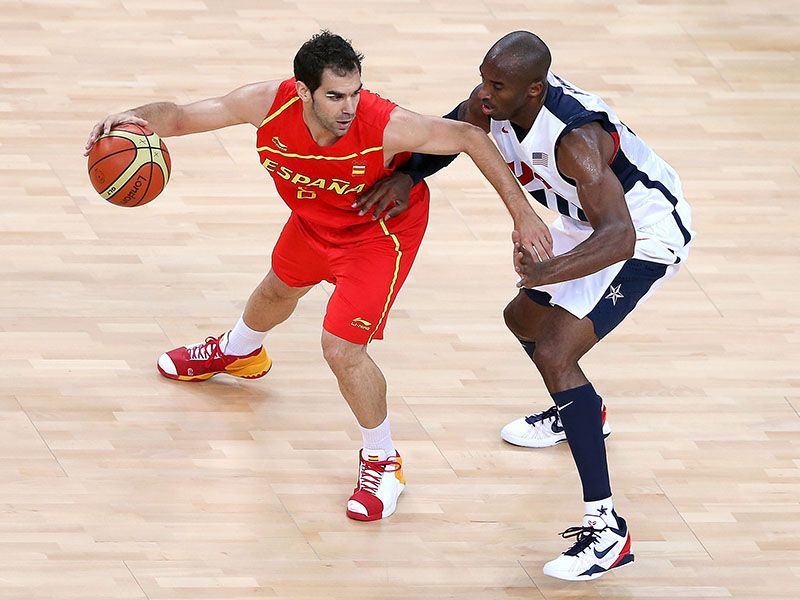
2. Stay in a balanced stance.
An on-ball defender must stay in a balanced stance at all times so that they’re ready to react to the offensive player as quickly as possible.
This means they should stay low, keep their chest up, and place an even amount of weight on each leg.
3. Slightly overplay the middle to force the offensive player sideline or baseline.
The player defending on the basketball should have their head in line with the opponent’s shoulder on the side you don’t want them to drive.
4. Keep an arm’s length distance at all times.
The defender should be able to stick out their arm full length in front of them and just be able to touch the player they’re defending.
5. Keep your eyes on the opponent’s chest.
It’s very easy for an offensive player to fake with their head, eyes, or body. The spot on a player that is most difficult to fake with is their chest.
One Pass Away – Denial DefenseAs per rule #3, any player one-pass away from the basketball should be in a denial stance to deter any pass to their player.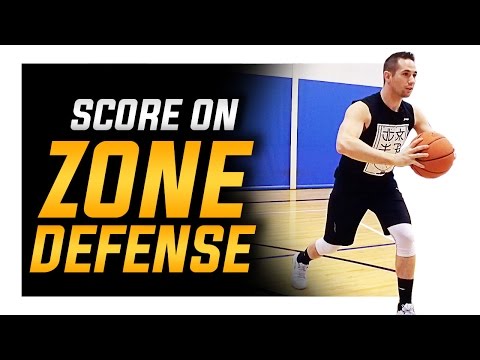
A denying defender should have one hand and one foot in the passing lane at all times, their chest should be facing their direct opponent, and they should be looking over their lead shoulder to see both the basketball and their man.
This is important to note because I see far too many coaches teaching their players ‘ball-you-man’ stance when one-pass away.
The reason this is the wrong stance is because if your opponent was to suddenly backdoor cut, the denial defender would need to do a full 180-degree turn to defend it.
However, if your defender backdoor cuts when your chest is towards the player and you have a hand and leg in the passing lane, all it requires is the defender flicking their head around and the sliding in the deny position towards the rim.
The purpose of this is that we want to remove all easy passing options from the player with the basketball. This is why the man-to-man defense is an aggressive defense.
The distance a denial player should be from their man will depend on the distance the offensive player is away from the basketball. A good rule of thumb would be close enough to ensure you can close the distance and pick off the pass if a lob is thrown over the top.
A good rule of thumb would be close enough to ensure you can close the distance and pick off the pass if a lob is thrown over the top.
Once again, the 3 keys to great denial defense are:
1. One hand and foot in the passing lane.
2. Chest towards your direct opponent.
3. Eyes over lead shoulder to see both.
Two Passes Away – Help DefenseAny defender two or more passes away from the basketball is playing help defense.
This requires the defender to be in ‘ball-you-man’ stance.
The ‘ball-you-man’ stance means that the defender is pointing one hand at their opponent and one hand at the basketball. They must be able to see both with their peripheral vision at all times.
The position of a help defender will vary depending on where the basketball is on the court and where their direct opponent is on the court at that time.
When the basketball is on the weak-side and below the free-throw line, the players two passes away will often be in either ‘High-I’ or ‘Low-I’.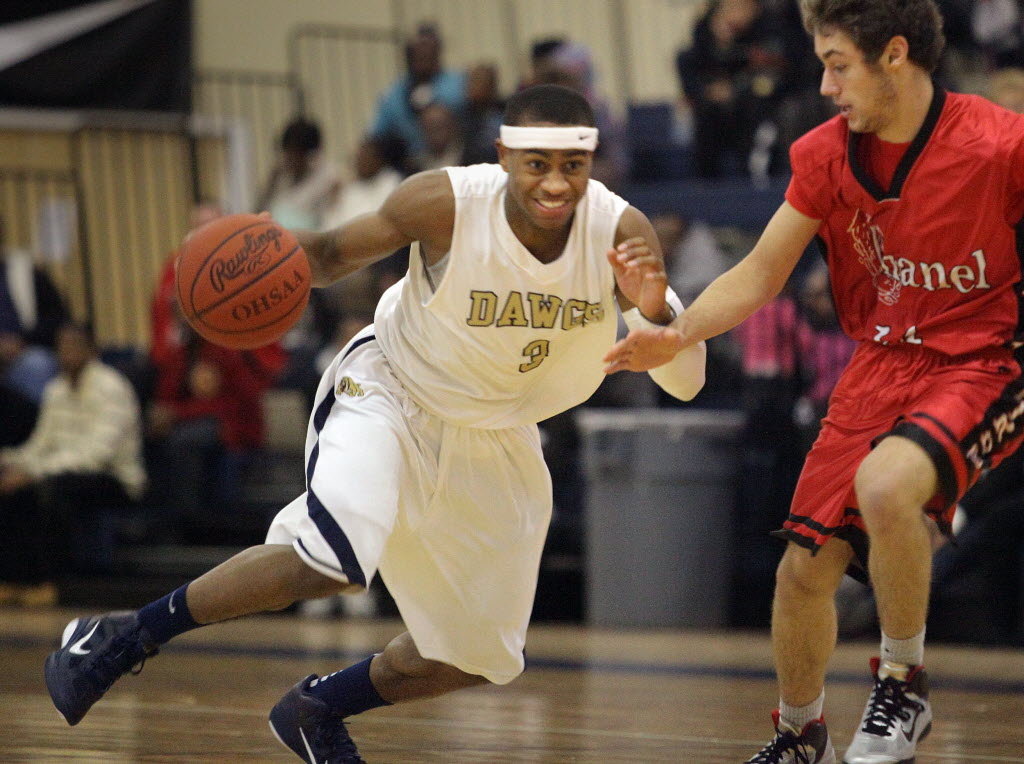
This is an important concept to understand for the article so I’ll give you a brief introduction here…
When the basketball is on either of the wings or in one of the corners, there should always be 2 help defenders with at least one foot on the split-line (the line down the middle of the court).
1. A help defender close to the rim in the paint (low-I)
2. A help defender near the free-throw line (high-I).
By establishing these two help defenders, it makes it much easier for the defensive players to know their understand their roles and rotations on drives to the rim by opposition players.
Here are a couple of diagrams to give you an example…
How to Run the Man-to-Man DefenseNow, let’s get into how your team will actually run the man-to-man defense during a game!
First, I’ll talk about the positions the players should be in when the basketball is in different areas of the court.
After that, I’ll break down what rotations must occur on the floor when there is dribble penetration from the offensive team.
Basketball Top of the KeyWhenever the basketball is within the lane lines at the top of the key, the team has one goal: Get it out of there!
As soon as the basketball is dribbled over the half-court line, the point guard defender (x1) immediately starts forcing the dribbler to the sideline by angling their defensive stance.
At the same time, the wing defenders (x2 and x3) pinch in and allow the pass to be made to a player on the wing.
(Note: When the basketball is at the top of the key is the only time that players one pass away don’t deny the pass.)
As for the help defenders (x4 and x5), both of them have a foot on their respective lane line.
—
The goal when the ball is at the top is to get the basketball committed to one side of the court.
This can happen either with the point guard dribbling to one side or passing to a player on the wing.
Let me take a minute to explain why we allow the basketball to get from the top to the wing…
When the basketball is at the top of the key, the man-to-man defense is at its most vulnerable.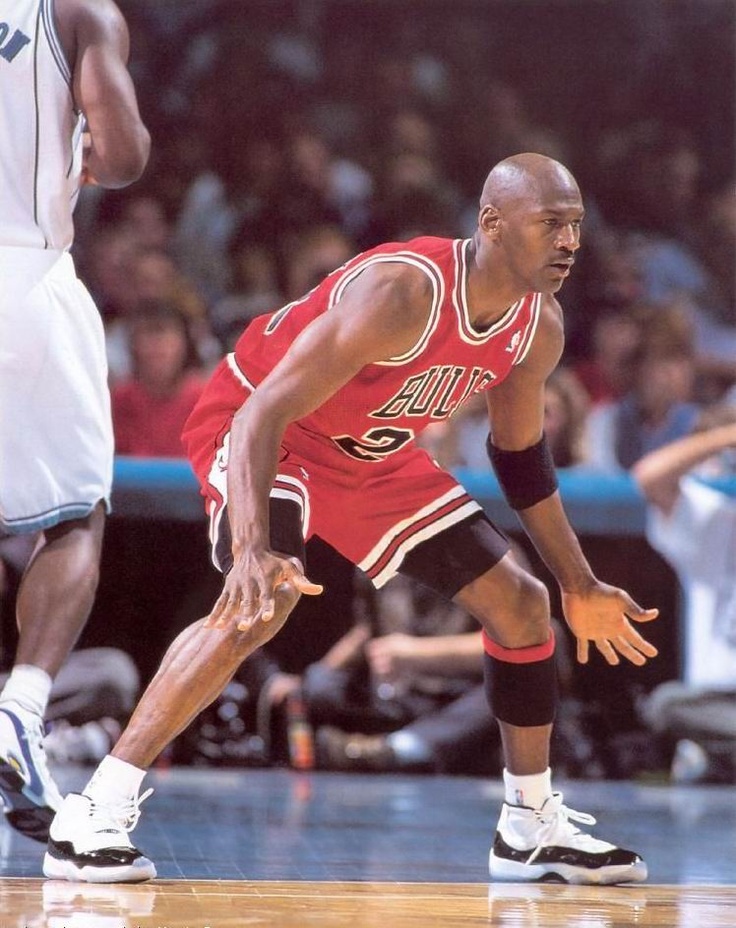
The reason for this is because on a drive through the middle of the lane, the defenders can be confused on who should help and who should stay attached to their player.
The confusion will often lead to easy layups and open shots.
This is because ball-side and weak-side has not been established.
However, when the basketball is established on one side of the floor, players on the floor know whether they’re in help or deny and what their responsibilities are making help and rotations much quicker and easier.
Basketball on the WingWhen the basketball gets to the wing, the most important thing is that you don’t allow the basketball to be reversed back to the top of the key.
The player defending one pass away towards the top (x1) must be in complete denial position.
The on-ball defender (x2) should be playing on the high foot of the player with the basketball to take away the middle drive and force them to drive towards the baseline if they choose to dribble.
If the offensive player does attempt to dribble middle, the on-ball defender should only slide vertically to force them to the top of the key.
As for the corner defender (x4), they should be in full denial as they’re one pass away from the basketball.
(Side note: Although I don’t recommend it for youth teams, there can be a benefit to allowing the pass to the corner to occur since it removes even more offensive options.)
Looking at the help defenders, x3 and x5 should have a foot on the split line as the basketball is at the free throw line extended or lower.
This puts them in the best position to help, but still gives them time to recover and perhaps get a deflection if the players with the basketball decides to throw a skip pass.
Basketball in the CornerOnce again, when the basketball is passed to the corner, the most important thing is that we don’t allow the basketball to be reversed to the wing.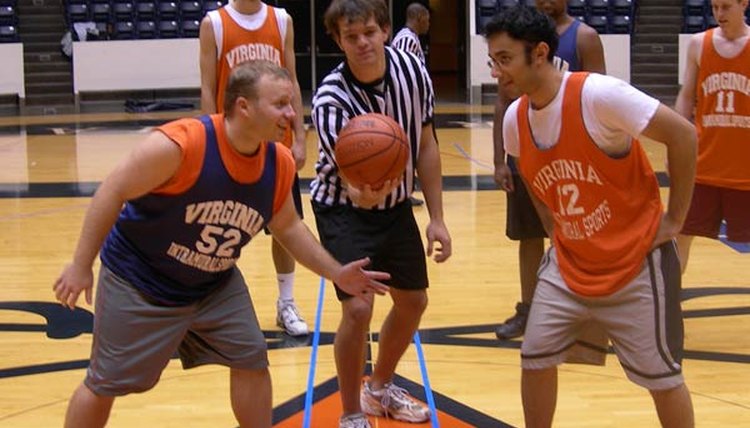
The player one pass away to the wing (x2) must be in complete denial and not allow the pass to be made to the wing.
The on-ball defender (x4) must aim to contain the player in the corner. But by overplaying the high side, if x4 is beaten off the dribble, it must be towards the baseline because there is help waiting.
The player in low-I (x5) is in help position anticipating the drive from the player with the basketball.
The player in high-I (x3) is in help position and is preparing to drop down and rotate if 4 drives the basketball and x5 needs to help.
The final player (x1) is in ball-you-man position and are as low as possible while still being able to intercept a pass to 1.
Dribble Penetration and RotationsIf your players aren’t able to make the correct rotations when an offensive players drives the basketball, you will have a very ineffective man-to-man defense.
Make sure you constantly drill the following rotations each and every practice.
Top of the Key Drive:As explained in the previous section, dribble penetration from the top of the key through the foul line is the hardest penetration to defend when playing man-to-man defense.
We never want to let it happen.
This can often occur against a great point guard, if the player defending the dribbler is playing too close to their man, or if we allow ball reversals and rotations and closeouts are poor.
But knowing this will occasionally happen, your players must know how to best defend it.
Here’s how to do it:
When the defender at the top of the key is beat and the dribbler gets into the lane, whichever defender is the lowest on the weak-side must step across to defend the basketball.
X3 doesn’t help on the drive since they’re one pass away. They can quickly stunt to try to make the driver hesitate or pick up the basketball, but they must not leave their direct opponent.
Since help always comes from the weak-side, x4 must step out and take away the corner three-point attempt.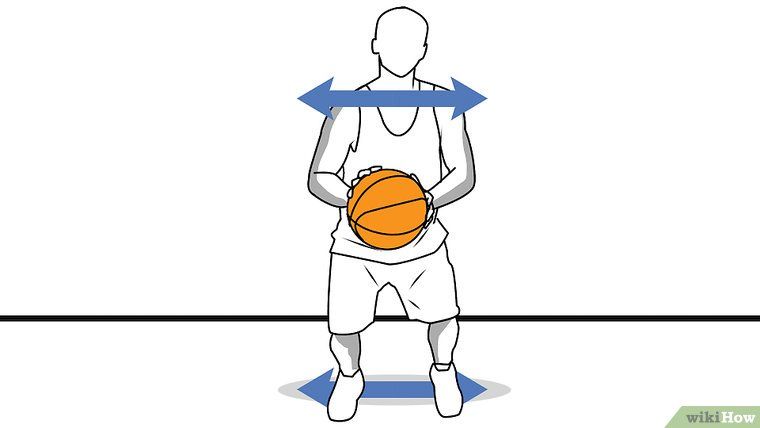
The player that must help is x5 since they’re the lowest on the weak-side.
When x5 steps up to help, x1 must immediately rotate down and will now be the player that closes out on the basketball if the pass is made across court to 3 or 5.
Wing Baseline Drive:When the basketball is on the wing our ball-side and weak-side are clearly established which is great for the defense.
On the baseline drive from the wing, if there’s an offensive and defensive player in the corner (x4), they do not help off a ball-side corner player.
Remember: Help always comes from the weak side.
The player at the top of the key (x1) is denying the ball reversal.
Then since the basketball is on the free-throw line or lower, we have high-I and low-I established in the key.
Low-I (x5) helps on the drive and meets to trap the dribbler just outside the paint. X5 and x2 trap the offensive player if they pick up the dribble.
High-I (x3) must rotate down and prevent the pass to 5 in the corner.
The final defender (x1) drops down and positions themselves so that they can intercept a lob pass made to either 3 or 1 or defend either of them if the skip pass is made over the top.
Wing Middle Drive:The middle drive from the wing is a bit more difficult and not a drive the defense ever wants to give up.
If the on-ball defender is correctly playing on the high side of the player with the basketball, they should be able to take a large slide or two vertically and cut off the drive or draw a charge.
If the on-ball defender has been caught out of position, the next goal is to force the offensive player to dribble to the top of the key.
If the on-ball defender has really been caught out of position and the drive is inevitable, the lowest weakside player must step across and challenge the shot and the correct rotations must take place.
X3 can quickly stunt on this drive with their back to the basketball in an attempt to make the offensive pick up the ball as long as they can quickly close out on their player without giving up the shot. They should never fully commit to a trap as it will leave the wing shooter open.
This can be a difficult rotation as if the dribbler crosses over the split line with their dribble, the help defender (ball-side and weak-side) changes.
Take a look at the following diagrams to see the differences and the rotations…
As you can see, allowing the middle drive ends up very problematic and confusing for the defense.
So make sure it never happens!
Corner Baseline Drive:The rotations on baseline penetration from the corner are very similar to wing penetration.
The defender playing on the wing player (x2) makes sure to deny the easy reverse pass back outside.
The player in low-I (x5) is responsible for stepping across to set a trap with x4 if the player with the basketball decides to drive baseline to the basket.
If this occurs, x3 drops down and cuts off the passing lane to the player x5 was defending.
Finally, x1 drops and now has two offensive players they must position themselves in-between. If the interception pass is there, go for it. If not and the skip pass is made, x1 is responsible for closing out on either 1 or 3.
Drive with Low Post DefenderDribble penetration from the corner or wing, while there’s an offensive player in the low post, isn’t common but can happen.
Here are the rotations when it does occur:
Since we 1/2 front on the low side when there’s a player in the low post, it’s easier for the low post defender (x5) to take one step across and trap the dribbler on the baseline with the on-ball defender (x4).
To take away the pocket pass to the low post player, the defender in low-I (x3) must step across and guard the pass to the low post player.
The defender in high-I (x1) must then drop and they’re responsible being in position to either intercept a lob pass or closeout on either 1 or 3.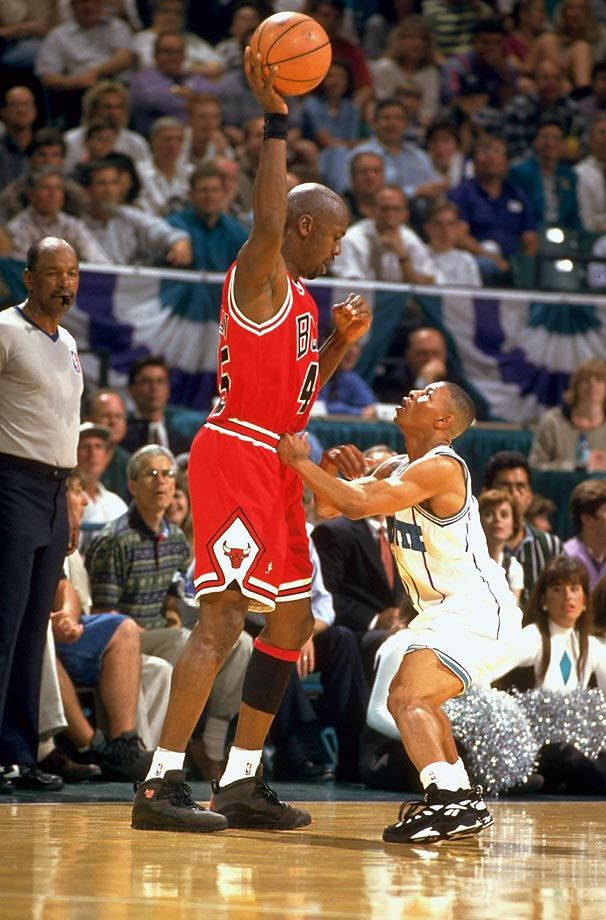
To not give 4 an easy pass out of the trap, x2 must continue complete denial of the outlet pass to 2.
Drive with High Post DefenderWhen there are offensive and defensive players in the high post, the defender does not help out on the drive as they’re too far away and all it takes is a pocket pass for an open jumper.
Instead, low-I (x3) steps across as traps the dribbler with the on-ball defender (x4) just below the low block.
The defender in the high post (x5), denies the pass to the high post player and doesn’t help.
The player denying the retreat pass (x2) continues to deny the pass outside.
This leaves high-I (x1) to drop in and is now responsible for intercepting the pass or closing out on 3 or 1.
Skip Pass RotationsOn any skip pass, the most important thing is that the player closing out on the player who receives the basketball closes out in a banana cut so that there’s no middle penetration.
Every player on the team must be committed to sprinting to their next position on the flight of the basketball.
Often it’s not the closeout player who is too slow, it’s the players who were previously on the ball-side not sprinting into help positions quick enough.
Also, depending on what level you’re playing, you might want to run the shooter off the three-point line if they’re a good shooter.
Here are a few diagrams to show you close out rotations:
AdvancedTop to Wing Pass – Should you allow it?In the guide above, I break down the variation allowing the pass from the top of the key to the wing because I believe it to be the most effective way to play man-to-man defense.
Since the man-to-man defense is most vulnerable from the top, why would we want to keep the ball there by denying the pass to the wing?
But there are other ways to do it…
Is it easier to simply make a denying one pass away a universal rule including from the top?
Here are a few ways why you might consider denying this pass to the wing:
1.![]() Players can sometimes get confused when exactly they should allow the pass and when they should deny.
Players can sometimes get confused when exactly they should allow the pass and when they should deny.
2. It’s another rule for players to remember.
3. Sometimes putting more pressure on the point guard is a good thing!
4. Most teams begin their offense with a top to wing pass. By denying it, you will often disrupt the opponents offense.
Since there is no right or wrong answer to choosing to deny or allow the pass, each coach must decide individually after looking at the pros and cons.
It’s up to you!
Defending the PostKnowing how your team is going to defend the post is crucial to a great man-to-man defense.
You must have a consistent system that’s based on the strengths and weaknesses of the post players on your team.
But before we get into any of that, here’s the main rule for defending the post…
Don’t let it get there!
Allowing the basketball to get into the post is bad news for any defense.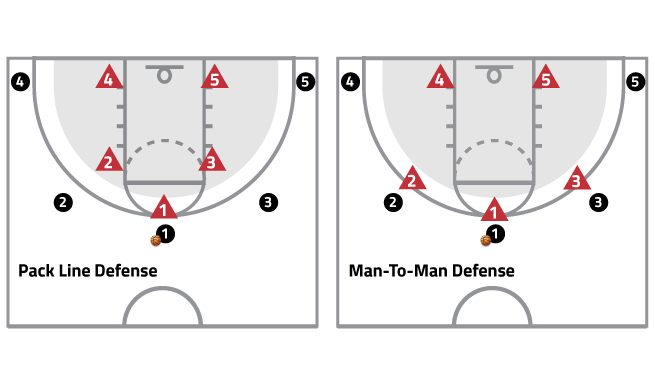 It will often lead to part of the defense collapsing or a silly foul by a post defender.
It will often lead to part of the defense collapsing or a silly foul by a post defender.
Before we discuss the ways to defend the post, here are 3 tips to keeping the basketball out of there in the first place…
1. Beat them down the floor
By beating the opposition post player down the floor, it takes away their ability to establish strong early position that can result in a quick pass inside and an easy score.
2. Great on-ball defense
Guards pressuring the player with the basketball can go a long way to discouraging the pass inside to the post player. Every on-ball defender should be active with their hands in the passing lane and tracing the ball.
3. Push them off the block
If a post player does establish position on the block, a post defender can move them further out by keeping their arm bar locked still while pushing the offensive player out with the strength of their lower body.
Positioning to Deny the Post PlayerThere are many different ways to deny the pass into the post, but here are my preferences:
(I’m not a fan of fronting the low post)
1.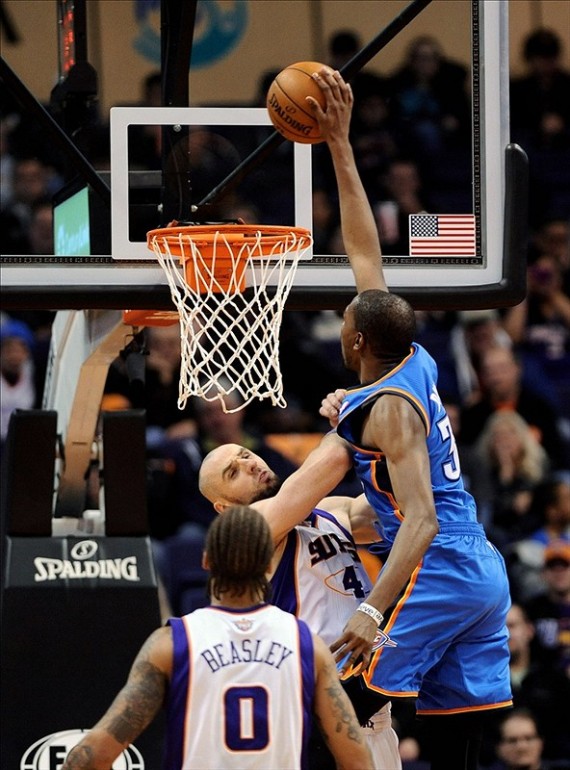 Basketball above the free-throw line.
Basketball above the free-throw line.
When the basketball is above the free-throw line, the post defender should 3/4 front keeping themselves on the line between the basketball and their opponent.
For the offensive team to make this entry pass, it would have to be very accurate and the post defender will still have time to establish position between them and the basket.
Also, keep in mind that there is a player in low-I who can pick off any passes made over the top.
2. Basketball below the free-throw line.
When the basketball is below the free-throw line, the post defender should 1/2 front from the baseline side.
By doing so, they’re in perfect position to help on any baseline drives.
Also, since the pass is now shorter, only half fronting the offensive player will allow the defender to still be able to establish position behind if they’re unable to get a deflection on the pass inside.
Trapping a Dominant Low Post PlayerThere will be times when you come up against such a dominant low post player that you have no choice but to send help and trap them in the post.
When this happens, I recommend sending trapping with the player in the low-I help position.
Here’s how it works:
When 4 receives the pass in the post, x4 must immediately establish position behind.
Immediately, x5 will sprint across and set a trap on the high side with x4.
X2 drops to defend 5 and then x1 drops and becomes the interceptor.
Their role is to pick off any passes made to 1 or 2. If none are available for steal or deflection, they’re the first to close out to whoever receives the outlet pass.
On the ball-side, x3 never allows the simple pass out and is in complete denial while the basketball is in the post.
Transition DefenseYou can never have a great man-to-man defensive team if you’re not a great transition defense team.
Educate your players on the importance of this and then get them to buy-in and commit to transitioning back quickly after each offensive possession.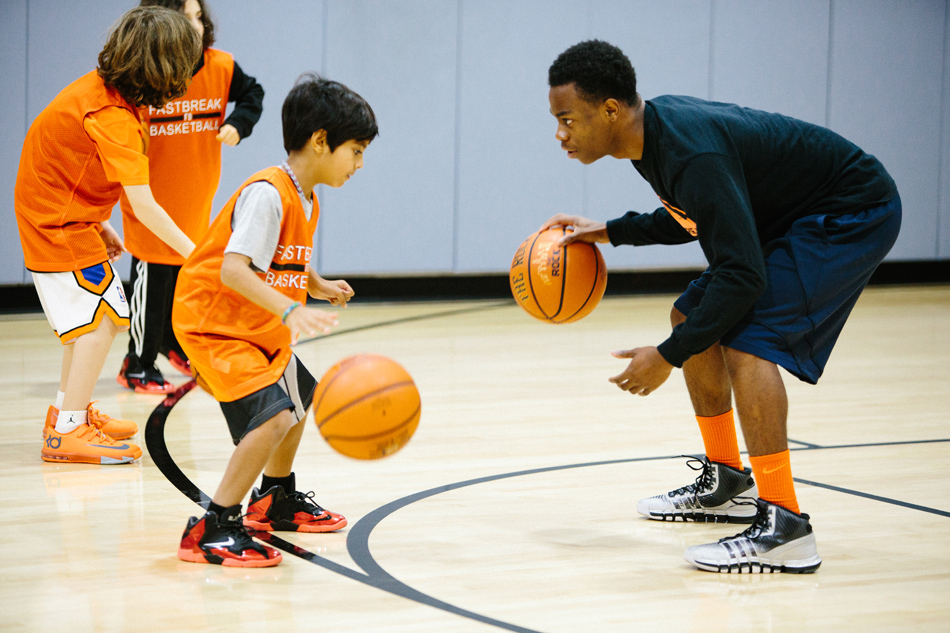
The secret to being a great transition defense team is that your players must know how many people are going to the offensive boards and how many people are to immediately retreat on any shot attempt.
The worst possible thing a player can do after an offensive shot is to stand and watch. Neither transitioning back on defense or attacking the offensive glass.
Most coaches refer to this as being in ‘no man’s land’. A place a player never wants to be!
Here’s what I recommend when running the man-to-man defense:
Send three players to the offensive glass and send two players back on transition defense immediately after the shot.
As the two players transition back, the goal is to establish a top defender and a bottom defender.
The bottom defender protects the rim while the goal of the top defender is to slow down the basketball and give the players that were competing for offensive rebounds time to recover on defense.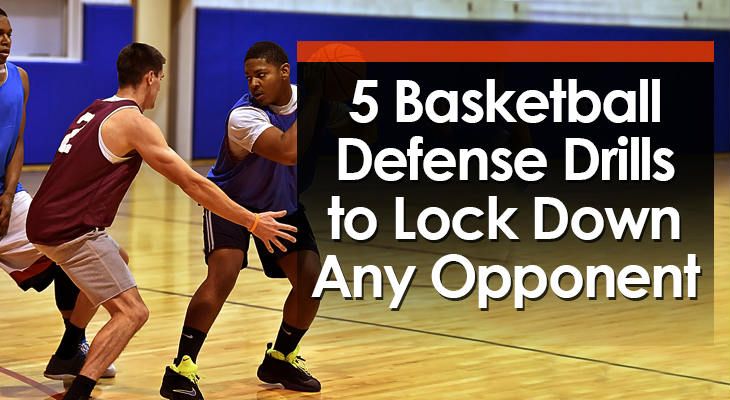
This is the method I’ve found the most success with, but it might not necessarily be the best option for your team.
For instance, if you have a very small team that never gets offensive rebounds, you could send all 5 players back immediately after each shot in an effort to never give up any transition baskets. There are numerous NCAA teams that currently do this.
Defending BLOB’sInbounds plays often provide great scoring opportunities for the offensive team.
They have well-thought-out plays and are in the perfect position to run them.
The main goal when defending a baseline in-bounds plays is to get the opponent to throw the ball to the top and set up their main offense.
If you can do that, you’ve successfully defended the BLOB.
Defending a baseline in-bounds while playing man-to-man defense can be done in two ways:
1. Stick to man-to-man defenseIf you’re going to stick to the man-to-man defense on baseline inbounds, there are a few things you must be prepared to do to stop the opponent from getting an easy score.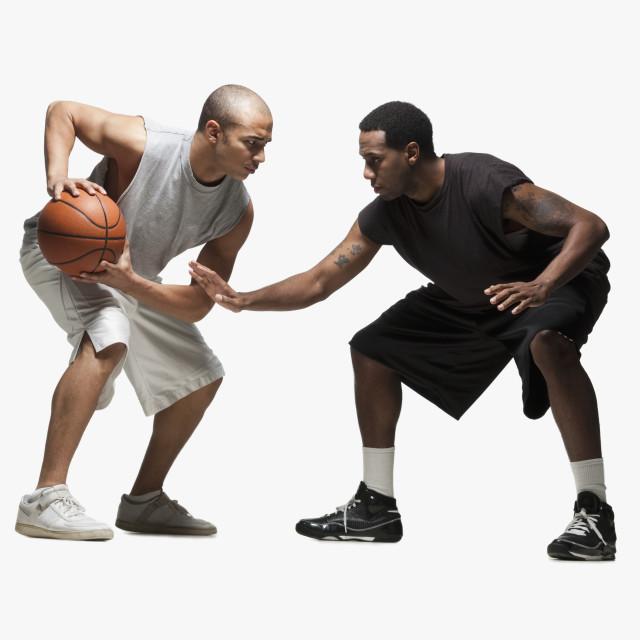
a. Position the in-bounds defender near the rim
The main goal here is to take away the easy pass and score under the rim and force the opponent to pass out to the wing.
Depending on where the in-bounds pass takes place, the in-bounds passer’s defender should position themselves along the lane line connecting to the baseline to take away the under the rim pass.
b. Switch Everything
Since the up-screens and cross-screens can be difficult to defend on BLOB plays, I often recommend that teams switch everything.
The key is for defenders to stay below the offensive players and keep themselves on the basket side of their opponents.
2. Run a 2-3 zoneDepending on the level of basketball you’re coaching and the rules of your league, you might consider running a 2-3 zone on inbounds plays.
Once the play has been in-bounded to either the wing or the top, players switch straight back into their man-to-man defense.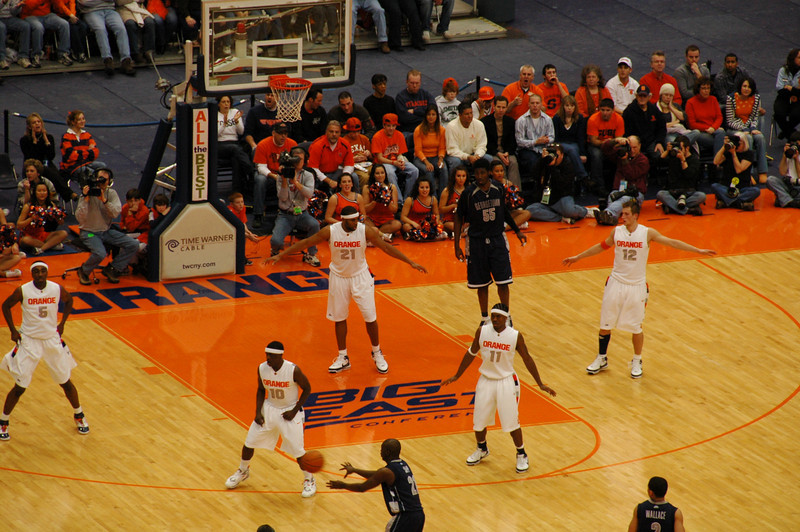
The reasons the 2-3 zone works so well on BLOB’s is because it floods the key with defenders and doesn’t allow the easy baskets under the rim that can often occur when playing man-to-man defense.
Defending the Pick and RollThe pick-and-roll is arguably the toughest action in basketball to defend against.
When playing man-to-man defense, there are a few ways you can choose to defend this action…
1. Fight Over the ScreenThis is my recommended method of defending against the pick-and-roll.
This requires the screener’s defender ‘hedging’ out high and forcing the dribbler to take a few extra vertical steps which allows the on-ball defender to fight over the screen and recover back in front.
This can be difficult for youth players, but hedging and fighting over screens are great habits for players to get into at a young age as it will be a very important skill when they’re older.
2. Switch the Screen
Switch the ScreenAnother option a coach has at their disposal is to switch on any pick-and-roll.
As the name implies, this simply means that the defenders hold their positions and swap the offensive player they’re guarding.
This can be problematic if you end up with small player defending a big player or vice versa, but at the youth level players aren’t often smart enough to take advantage of it.
3. Go Under the ScreenTo go under the screen, the screener’s defender can take a quick step back to give the on-ball defender room to squeeze past the screen and immediately establish position in front of the dribbler.
While this is probably the easiest way to do it, I do believe players are missing out on the important skill of learning to fight over screens and how to hedge.
ConclusionThe 5 main man-to-man defense rules:
1.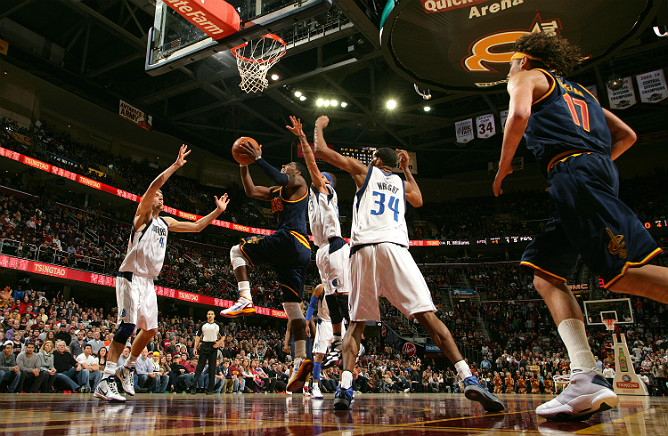 No middle penetration.
No middle penetration.
2. No ball reversals.
3. No help one pass away.
4. No face cuts.
5. Move when the ball moves.
The man-to-man defense is one of the best defenses you can run with your team no matter what level you’re coaching.
With nearly all high-level basketball teams using this defense, the skills that are learned in man-to-man defense are crucial for all players to develop from the earliest age possible.
Sure, it can be difficult to teach. But they payoff for your players will definitely be worth it in the long run.
If you’re a coach that puts developing players over winning youth basketball games, then this defense is for you!
Man-to-Man Defense Guide - HoopsKing.com Instructional Basketball Company
Man-to-Man Defense is the most common defense in the game of basketball. You’ll see it used in every level of basketball from youth league all the way up to the professional leagues.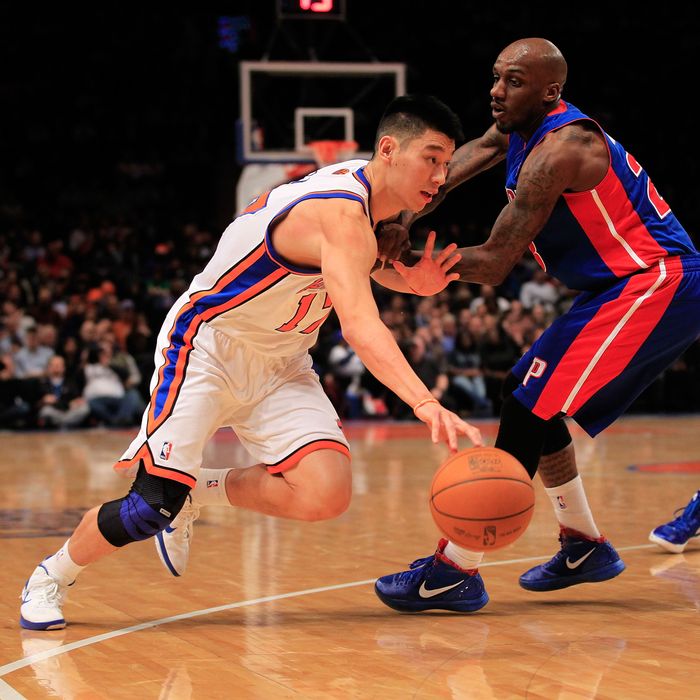
This defense involves all five defensive players on the court being assigned one opposition player who they’re responsible for defending whenever they’re on defense. Players are often matched up by position, ability, or size. At times, players will be switching or helping on defense assignments but for the most part each player is sticking to defending one player.
Learning to be a great man-to-man defender is arguably one of the most important skills for players. In this article, you will learn the strengths and weaknesses of implementing the Man-to-Man Defense along with the basic rules and positions to determine if it’s the right defensive strategy for your team.
Strengths of the Man-to-Man Defense
- Can Guard Any Offense. The beauty of the Man-to-Man Defense is it can be used to guard pretty much any offensive system. You can make your adjustments as needed but overall this defense will be ready to go.
- Forces the Offense to Make a Play.
 If your team buys into this defense and every position can guard then you're forcing the offense to figure out how to beat you. A team with 5 defenders on the court - all working together - is going to be HARD to beat.
If your team buys into this defense and every position can guard then you're forcing the offense to figure out how to beat you. A team with 5 defenders on the court - all working together - is going to be HARD to beat. - Exploits Weaknesses in Offense. In this defense you can make changes according to your opponent or to a specific player weaknesses. Player A can't shoot from the outside? Instruct their defender to sag off of them which forces them to shoot the ball.
Weaknesses of the Man-to-Man Defense
- Dribble Penetration to the Middle. The fastest way to bust a Man-to-Man Defense is to penetrate the middle of the lane. If the offense gets the ball to the middle then your defense is most likely beat. It's harder to know who should help and what the rotations are when the ball is in the middle which leads to confusion for the defense.
- Unable to hide weak defenders. In this defense, every player has to be ready guard on-ball, help off-ball, and rotate when needed which means weaker defenders may struggle.
 Effective offenses will find this weakness and try to exploit it.
Effective offenses will find this weakness and try to exploit it. - Difficult to Learn. For this defense to be successful, players have to learn multiple defensive positions on the court and how to quickly transition in and out of them. This can be hard to understand at first because it takes time for players to understand these positions and movements along with reading and anticipating the offense.
Man-to-Man Defense Overview
Man-to-Man Defense involves all five defensive players on the court being assigned one opposition player who they’re responsible for defending whenever they’re on defense.
The keys to a tenacious Man-to-Man Defense is a solid understanding of the rules and positions on the court. If your team recognizes what to do and not do and where each player needs to be in order for success then this defense will be able to stop any offensive game plan.
Now lets break down the rules and positions for a strong Man-to-Man Defense.
Man-to-Man Defense Rules
When it comes to teaching Man-to-Man Defense there are 5 key rules you need to enforce with your team.
- No Middle Penetration. The first rule and most important rule is not allowing the opponent into the middle of the lane. Instead, defenders want to force their players to the sideline or baseline because it’s easier to defend and rotate. If the ball gets to the middle of the court then your defense is more likely to give up points.
- No Ball Reversals. When the ball has been passed to one side of the floor you never want to allow it to be reversed back to the top or the opposite side. When the ball gets reversed it causes the defense to move and rotate opening up possible gaps and scoring opportunities for the offense.
- No Full Help From One Pass Away. Players one pass away from the ball are helping in the driving lanes by taking away dribble penetration.
 If the offense attempts to attack the basket, the player one pass away should give a little help in order to pressure the attacker to pick up their dribble, but not fully help in case the offense tries to pass out to their offensive assignment.
If the offense attempts to attack the basket, the player one pass away should give a little help in order to pressure the attacker to pick up their dribble, but not fully help in case the offense tries to pass out to their offensive assignment. - No Front Cuts. Defenders never want the offense to get between them and the basketball. In Man-to-Man Defense, front cuts happen when the offense passes the ball to a teammate and cuts to the basket. When a pass is made, the player defending the passer must quickly jump to the basketball forcing their opponent to cut behind them. In other words, defenders must always stay between their offensive opponent and ball.
- Move When the Ball Moves. When the basketball moves, every defensive player on the court should move and adjust their position on the court according to the ball. This rule helps your defense learn to stay alert and anticipate offensive movements to get stops and try to create turnovers.
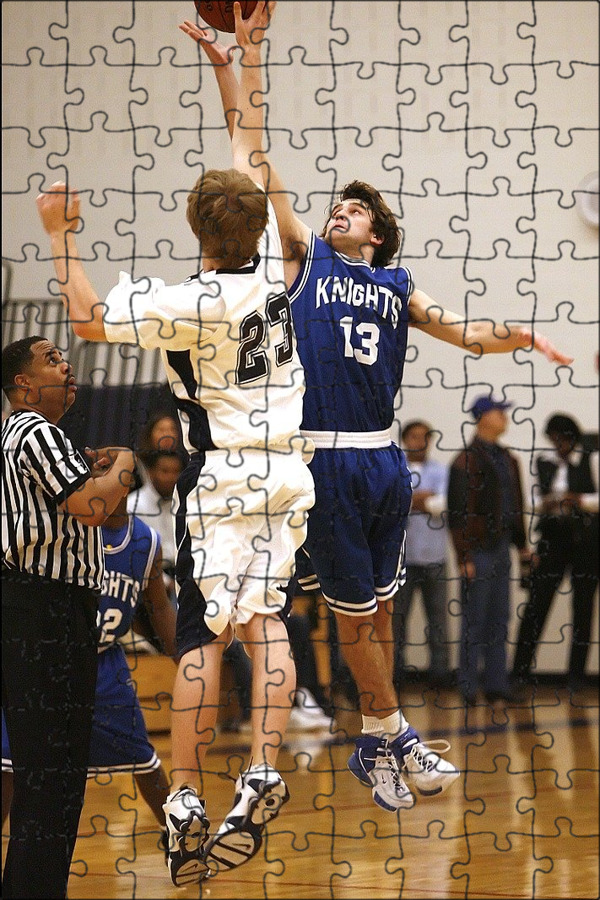
Man-to-Man Defense Positions
There are 3 positions you can be in on the court in a Man-to-Man Defense: on-ball defense, denial defense, and help defense.
Each player understanding all of these positions is essential to a successful team defense. If any player is out of position it can lead to open driving lanes and scoring opportunities for the offense.
On-Ball Defense
The on-ball defender is responsible for guarding the basketball. Their role is to contain the ball handler and influence them towards the sideline and baseline.
It’s important for all defenders on the court to be able to contain the basketball. If the defender gets beat with the dribble then your defense could break down very quickly.
On-Ball Defenders should be crafty when guarding the ball and not reach in for a steal or turnover, but instead apply constant pressure on the ball-handler and be ready if they mishandle their dribble.
Denial Defense
Players in denial defense are one pass away from the basketball and in a denial stance to prevent any pass to their player.
A defender in denial should have one hand and one foot in the passing lane at all times, their chest should be facing their opponent, and they should be looking over their shoulder to see both the ball and their opponent.
The distance a denial player should be from their man will depend on the distance their opponent is from the basketball. A good rule to follow is: close enough to close the the distance and recover to guard your opponent if they are passed the ball.
Help Defense
Help defense is any defender two or more passes away from the ball and the last line of your Man-to-Man Defense.
A player in help defense should have one hand point to their opponent and the other hand points at the basketball. Using their peripheral vision, they should be able to see both man and ball at all times.
They have to see ball in order to know when to help and they have to see man in case their man moves and they have to recover and change defensive positions.
The position of help defense depends on where the ball is on the court and where their opponent is on the court as well. When the defender is two or more passes away, the help defense is on the split line. Help defense will be on the split line either in the low help which is close to the rim in the paint or high help which is near the free throw line.
With these two help defense positions it makes it easier for the defense to know their roles and rotations if the offense dribble penetrates.
Want to hear more about Man-to-Man Defense? Check out this video from Coach Chris! How to Run Man-to-Man Defense
With the rules and positions in mind, it’s time to put it all together. We’ll start with positions the players should be in when the ball is in different areas of the court. Then we’ll break down what rotations must occur when there is dribble penetration or skip passes from the offense.
Then we’ll break down what rotations must occur when there is dribble penetration or skip passes from the offense.
Basketball Locations and Player Positions Top of the Key
When the ball is at the top of the key the main goal is to get it out of the middle of the court and make the offense pick a side. To achieve this, the on-ball defender starts forcing the ball-handler to the sideline as soon as they dribble the ball across half court.
Players who are one pass away do not deny the pass in this instance because you want the ball on a side which means you will let the pass be made. Whether the offense dribbles or passes to a side of the court doesn't matter.
Once the ball is on a side of the court, the defense can establish who is in denial or help defense and what their responsibilities are in that position.
Basketball on the Wing
When the ball is on the wing, you want to make sure that you don't allow the ball to be reversed back to the top of the key.
The player on pass away towards to top must be in denial position to make sure the reversal pass can't be made while the on-ball defender should be playing on the high side of the player to continue forcing them towards the sideline and baseline. The player guarding the corner should be in denial as well since they're one pass away.
Help defense will be the two defenders whose offensive players are on the opposite side of the court which means they'll have a foot on the split line. This puts them in the best position to help or recover depending on what the offense does.
Basketball in the Corner
When the basketball is passed to the corner, the most important thing is to not allow a reversal pass back to the wing.
The player on pass away must be in full denial and not allow a pass to be made back to the wing. The on-ball defender should work to contain the player in the corner and play on their high side because the ball in the corner is where you want it to stay.
With the ball in the corner, help defense will be the other three players who are more than two passes away from the ball. The lowest help defender is going to be the first line of help defense if there is dribble penetration on the baseline while the higher help defender is ready to drop down as soon as the lower help defender helps.
The last help defender is as low as possible but still in a position they can recover to their player who is at the top of the key.
Man to Man Defense Drills
Shell Drill
A great way to get better at Man-to-Man Defense is to break it down. In this video, you'll see them focusing on Ballside-Helpside.
One of the biggest rules in this defense is to not let the basketball into the middle of the lane and this drill is going to challenge your players.
Individual Drills
As much as you need to learn defense as a whole it's important for players to individually work on their defensive skills. To become a better defender you should be working on skills such as sprinting, backpedaling, and defensive slides.
To become a better defender you should be working on skills such as sprinting, backpedaling, and defensive slides.
Here is an excellent example of some individual defensive drills.
If you want to become a solid defender then start training with Alan Stein. He is an internationally renowned performance specialist and the owner of Stronger Team and the Head Strength & Conditioning Coach for the DeMatha Catholic High School basketball program.
He has over a decade's worth of valuable experience in working with high school and college All-Americans and NBA players (Lebron James, Kevin Durant, Chris Paul, Kyrie Irving). And now he can work with YOU! You'll become a better all-around player who can be explosive on offense and lockdown on defense.
Ready to start training? Click here.
Learn More
The Man-to-Man Defense Guide should cover everything you need to know about this defense, but there's always room to learn more.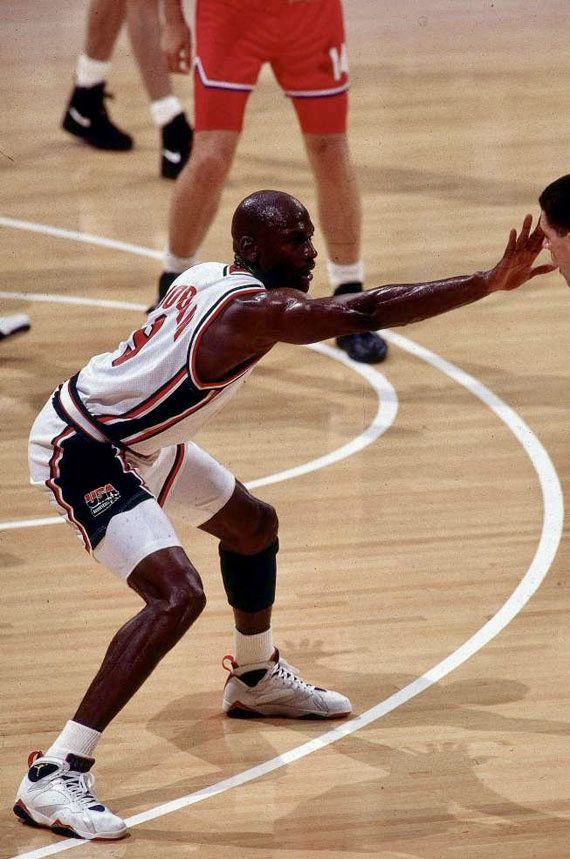 To learn more start browsing through our vast selection of Coaching DVDs right now.
To learn more start browsing through our vast selection of Coaching DVDs right now.
Our basketball training videos feature the best of the best. From the top coaches in high school, college, & the Pros to the best basketball trainers who teach Pro players we have them all. We have DVDs for rent by mail, downloads available for purchase and 48 hour rental, and also as DVDs. You can watch them over and over, take notes, and then rent another DVD over the same topic and very quickly your knowledge of a specific topic will reach mastery level.
Using basketball training videos as a coach can change your entire coaching style. You will see how the best coaches teach the game, how they talk to players, how they drill, and you can take their knowledge and apply it to the court right away wherever you coach.
What is Man-to-Man Defense?
Man-to-Man Defense refers to being assigned to one other opponent usually matched up based off size or skill level.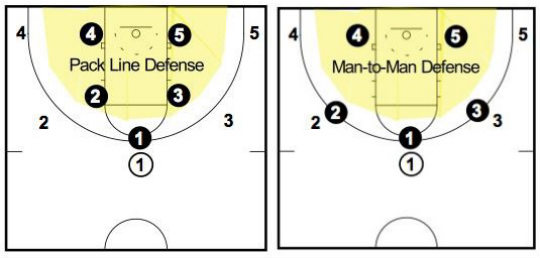 Man-to-Man Defense is one of the most popular defenses. Learn how to teach Man-to-Man defense here.
Man-to-Man Defense is one of the most popular defenses. Learn how to teach Man-to-Man defense here.
How Do You Teach Man-to-Man Defense?
There are 3 key positions of Man-to-Man:
- On-the ball Defense
- Help Defense
- Denial Defense
To teach your team Man-to-Man Defense you must begin with learning the techniques by watching coaching DVD's taught by the most succesful defensive teams out there. Check the DVD's out here.
What are the Pros to Man-to-Man Defense?
The strengths of Man-to-Man:
- Defends against all Offenses
- Exposes weak offense
- Forces opponents to make plays
For more advantages on running a Man-to-Man Defense click here.
What Are the Cons to Man-to-Man Defense.
The Disadvantages to Man-to Man:
- Exposes weak defenders
- Can be difficult to learn
- Dribble penetration to the middle
Learn more about teaching Man-to-Man Defense here.
Jun 22, 2020 Coach Chris
Playing defense in basketball
Hello, dear visitors of the website basketball-training.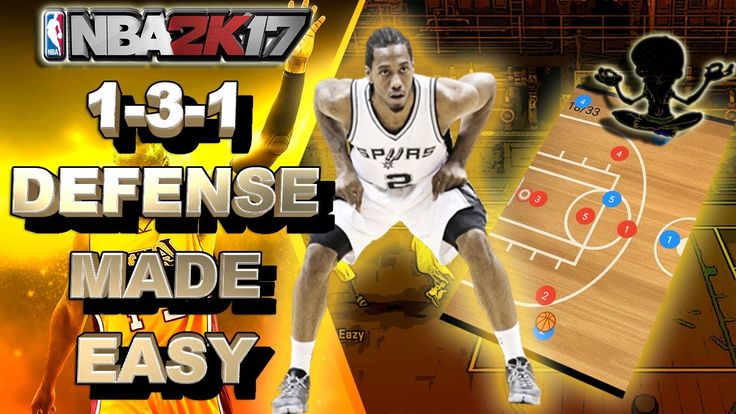 org.ua ! Today I want to share with you my observations and conclusions, which I received as a result of 's desire to improve his game in 's defense.
org.ua ! Today I want to share with you my observations and conclusions, which I received as a result of 's desire to improve his game in 's defense.
It so happened that the first few years of playing basketball (mostly on street courts) my defense game consisted of constant attempts to cover the opponent's shot. Sometimes it worked, sometimes it didn’t work very well (I ended up either on the opponent’s back or on his head). It's a hell of a defense. A couple of years ago, I reconsidered my vision of playing defense, which I want to share with you.
Defensive Tips for
Basketball Players The first video that gave any hint of developing a basketball player's defensive skills was 's three-minute performance by Bruce Bowen on the TNT Fundamentals series. Then there was a short article on how to play defense against A. Gomelsky. Well, the last, but probably the most important training video was the company's products Better Basketball - Better 1 on 1 Defense . Even after skipping over half of what was said (some because of the language barrier, something because of banal restlessness) and putting even less into practice, I became much better at defending myself.
Even after skipping over half of what was said (some because of the language barrier, something because of banal restlessness) and putting even less into practice, I became much better at defending myself.
By the way, in this article everything will be exclusively about personal defense (and not a word about zone defense, although it is also worth writing about). So, I highlight the following stages of defense in basketball:
Stage 1: Defense against a player without the ball.
The essence of defense is to prevent the opponent from getting the ball . This is probably one of the most difficult stages, but also one of the most effective. Agree, it is difficult to attack without having the ball. So, this stage of defense is incredibly difficult, because you have to give a lot of strength, not to be fooled by movements of the body, head and legs. A good result of such a defense is that the player does not receive the ball throughout the attack. Also a good result if the ball is received, but: in an awkward position (far from the ring; in the corner of the court) or in the last seconds of the attack. Shitty result - the ball is received quickly and conveniently.
Also a good result if the ball is received, but: in an awkward position (far from the ring; in the corner of the court) or in the last seconds of the attack. Shitty result - the ball is received quickly and conveniently.
Stage 2: Defense against the player who received the ball.
When a player receives the ball, he is in the classic "triple threat position". This means that he can shoot the ring, pass or start the dribble. This means that we will have to confront all three threats at the same time. So, the best option is to take a position that will minimize the range of movement of the enemy. First of all, close its strong side from the passage by sitting a little to the side of it. As an option - from the side of his supporting leg; those. You will know the direction of his movement (he will not step with his supporting foot).
Let's conditionally divide the opponent's body into 2 levels: the first zone - to the waist; the second zone is above the belt.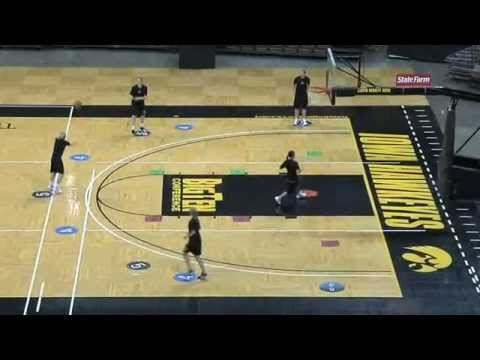 So, in order to start dribbling, the ball must be in the first zone. Both zones are suitable for a pass, and for a throw, the ball must go from the first zone to the second. I hope it's clear for now. So, one hand is playing with the bottom zone (preventing dribbling and low passing), the second is defending against a shot and a pass from the upper zone. Remember about the legs: with bent legs it is much easier and faster to make a jerk. If the legs are straight, then for a jerk they must first be bent.
So, in order to start dribbling, the ball must be in the first zone. Both zones are suitable for a pass, and for a throw, the ball must go from the first zone to the second. I hope it's clear for now. So, one hand is playing with the bottom zone (preventing dribbling and low passing), the second is defending against a shot and a pass from the upper zone. Remember about the legs: with bent legs it is much easier and faster to make a jerk. If the legs are straight, then for a jerk they must first be bent.
And one more piece of advice: pull the player all the time with your movements. Let the probability that these "ritual dances" help to knock out the ball will be small, but you will be able to knock the opponent out of his usual rhythm. And it's worth a lot!
Excellent defense: the ball is knocked out. Good defense - loss on pass, inaccurate pass, throw from an uncomfortable position.
Stage 3: Defense against the dribbler.
Assume that previous attempts to take possession of the ball have failed and the opponent has started to dribble. How to defend yourself then?
How to defend yourself then?
Let's not consider those situations in which the opponent is obviously weaker than you. It's just not interesting. The opponent is stronger, faster and jumpier than you - that's a good situation. Like I said, close his strong side. But if you don't know its strengths and weaknesses; you don’t know how to hold: from a throw or from a pass - that is, a good solution. We are trying to make sure that you are the leader. One side is obviously closed - and the player is deliberately skipped to the other. So you can not lose in the starting jerk and not guess the direction of movement: it can only go in one direction. Try to push the opponent with the ball to the end line, from where he can no longer comfortably attack the basket. Clamp into a corner, press to the line.
Again: close one side tightly. Better - if it will be his forte; if you don’t know which one is strong, close your weak side and let defenses under your strong side. And a safety net: sometimes it's better not to let a player throw from an average distance.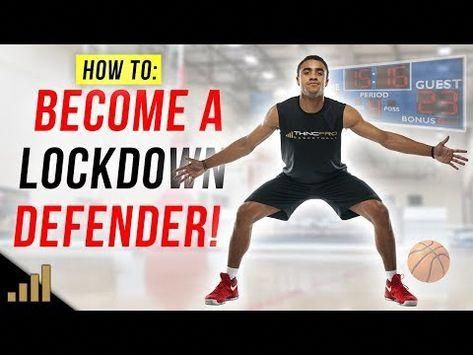 Allowing him to get under the ring. After all, there will be a safety net in the form of a “big”, which cannot be thrown so easily.
Allowing him to get under the ring. After all, there will be a safety net in the form of a “big”, which cannot be thrown so easily.
Stage 4: Maintenance completed.
It can be a double step and a throw, a simple throw after a stop, a jump, a pivot (reversal), a series of displays, etc. Let's take a closer look at this.
Double step. Remember: he has 2 steps to complete the attack, and you have 2 steps to hit the ball down, and then another full step to block. I recommend doing this:
- A series of small touches to the ball during a double step (as if you were playing a drum). Thus, you will not knock out the ball, but you will disorientate it accurately. Yes, and in order to keep the ball, you have to make more.
- Trying to hit the ball from below! When hitting from above, there is a very high chance that you will hit your fingers - this is a foul. But from below: few people expect such a blow, few people close the ball from below.
 And taking the ball up for a throw, he will receive an additional impulse, the push of the ball - throwing it as it was previously thought would not be so easy.
And taking the ball up for a throw, he will receive an additional impulse, the push of the ball - throwing it as it was previously thought would not be so easy.
A little tip: after picking up the ball by the opponent, very often the ball goes down, and this is done strongly and abruptly. Just substitute okay from below at the level of the opponent's lower back: he himself will knock the ball against your hand. This is a very cool and often unexpected trick for the opponent.
- If it was a jump stop, or just a stop, then you need to get as close as possible and raise both hands vertically up. Now you can not be afraid of a foul.
Stage 5: Jump Shot.
It's good if you jump high and sharp - then try to block at the moment when the ball leaves the thrower's hand. You can just try to brush it off at the moment when the supporting hand is no longer involved in the throw, and the ball is on the wrist. I will not talk about how to block-shot, this is a topic for a separate article.
I will not talk about how to block-shot, this is a topic for a separate article.
Remember that you can block the thrower's view with your hand: just don't poke it in the eyes, just bring it closer to the thrower's face. A good way (if you have not already jumped out for a block shot, and the throw is being made) is to simulate contact with various organs of the opponent (guys, you understand what I mean). Belly, solar plexus, groin - all this interferes with concentration at the time of the throw. Well, and often on street sites there is a clap of hands: at games they can give a foul, but on the street it can bring down that very concentration.
And finally, I suggest watching the old film , about the individual protection of basketball players, filmed in the USSR. There are some really useful things in there (the movie is old - so turn up the volume).
[youtube]9GMNCBu0Kes[/youtube]
Well, that's all, the main points that will help you defend better without any drastic changes in the game. I am sure that each of you found something useful in this article. If you have any questions or comments - write them in the comments, I will be glad to discuss.
I am sure that each of you found something useful in this article. If you have any questions or comments - write them in the comments, I will be glad to discuss.
And this article is over, I wish you successful training and see you soon on the pages of our site.
Defense in basketball: game tactics, tips
Basketball is a passion for millions of people around the world. Special results in the game to date have been achieved in the United States, it is here that the most powerful NBA league is located. It plays the best of the best. But to get there, you need to work long and hard. Today we will talk about the basics and consider the options for defense in basketball, although the entertainment of the game is the attack, it is the defense that sometimes brings titles in the game! Let's start looking into the issue.
Basketball: defense and attack
The basics of technique are laid in early childhood. It is very important to teach a child who attends the basketball section how to attack and defend in the game. Moreover, you need to do it in such a way that the player understands that basketball is a team game, and not an individual running around with the ball around the court in an attempt to attack the opponent's basket against all odds. Unfortunately, in the early stages of training, this trend is visible in more than half of the novice players.
Moreover, you need to do it in such a way that the player understands that basketball is a team game, and not an individual running around with the ball around the court in an attempt to attack the opponent's basket against all odds. Unfortunately, in the early stages of training, this trend is visible in more than half of the novice players.
A good coach is one who helps a child to develop technique. Defense in basketball is an integral part of the game and should not be ignored or neglected. This is an important point. By the way, it is worth noting that defensive actions can be very spectacular and spectacular. In general, in basketball everything depends on the players, their technique and grace, and not on the tactical scheme or role.
Basketball Defense Tactics
There are three main defensive tactics in modern basketball. Of course, there are various combinations and variations of these tactics, but the fundamental ones are:
- zone defense in basketball;
- pressing;
- personal defensive actions (personal tutelage).

Let's take a closer look at each variant of tactics and identify the features.
Zone
Basketball defense in zone defense tactics implies the game of each defense player in his allotted zone. That is, defense players play only on their own area of the site and do not leave it. Defensive actions are carried out against the opponent who enters this area of the site. Leaving your zone is only possible to secure a teammate who has “failed” in defense.
Amateur teams use this defensive tactic, but not in the very early stages. Zone defense is a rather complex interaction of players even at the aforementioned amateur level of play, not to mention professional teams.
Zone defense is a way to deal with passes under the ring and provoke an opponent to shoot from a distance. Also, this type of protection significantly compensates for the reduced athletic qualities of the players. Zone defense means fewer moves for the defending side, which means more energy reserves for the rest of the game.
If we talk about the weaknesses of such a defense, then this can include the difficulty for inexperienced defenders to determine the joints of zones with a teammate. For this reason, none of the defenders may not reach the ball, that is, the opponent will make a throw without resistance.
Zone defense is an ineffective way of defending against teams with set three-point shots. Also, the opponent's coach can guess such an option when his best player will attack from the zone where the opponent's weakest defender is defending.
Personal defense (personal defense)
In this case, each defensive player plays against the opponent assigned to him, regardless of the location in the attacking actions of the latter. The defending player can switch to another attacking player if a teammate makes a mistake and the opponent goes to the pass. Personal defense is very common at the amateur level of the game, although professional teams also use this defensive tactic.
The personal defense is well proven for defending against teams that like to shoot from medium to long distances. But personal defense is not very good against teams that make a lot of passes under the basket. With the help of passes around the perimeter, the opponent can stretch the defenders around the court, which will be the preparation and release of the zone for the partner's pass. When the defenders are stretched enough, there will be a pass to a player who will make a pass and with a high probability will score the ball into the basket.
Pressing
A very aggressive tactic that requires good physical condition from defensive players. Defense in this case starts from the front line of the opponent. In other words, after a goal is scored, the players do not go to their own half of the court, but begin to actively interfere with the opponent's game right on his territory. To some extent, this defensive tactic in basketball can be considered an aggressive form of personal defense.
Such protection is chosen either by sufficiently trained amateur teams, or by professional ones. This tactic can completely break the opponent's game if we are talking about amateur basketball due to its rare use and lack of experience in playing against such actions. In fact, pressing is not only a defensive tactic, but also an attacking one.
The choice of tactics
The coach is always responsible for the choice of tactics in the game, he sees what is happening on the court from the side and understands in the best way how to act in order to keep the winning score or eliminate the gap from the opponent on points.
Based on his experience, a coach can change tactical actions in basketball defense several times not per game, but per quarter! This exhausts the opponent, gives him problems, because the opponent is also forced to change his style of play for each type of defense.
Modern tactics for professional teams are hybrids of several standard types of defense. For example, one player on the defending team may use a personal defensive tactic against the offensive leader, while the rest of the players may play a zone defense method. There are a lot of variations and modifications of defense in modern basketball, especially when it comes to the games of professional players in the world's leading leagues!
For example, one player on the defending team may use a personal defensive tactic against the offensive leader, while the rest of the players may play a zone defense method. There are a lot of variations and modifications of defense in modern basketball, especially when it comes to the games of professional players in the world's leading leagues!
Tribute to the times
Today, when players have a very high level of training, and equipment and equipment for playing at the highest level, it becomes more and more difficult to defend, as the speed and dynamics of events on the playing floor sometimes go off scale. Defense and offense in basketball are an arms race on the playground.
Some teams prefer to play as the first number, while others play from the opponent and from defense. These are just the features of the tactics and style of playing that the team's mentor promotes. This is not to say that an aggressive attack is always a victory, or a deep defense and toughness of the game is the right path to the championship.
Everything is very complicated and individual, not only for a particular opponent, but even for a particular period of time in the same game. Basketball at the highest level is simply amazing fiction, this applies to actions both in attack and in defense.
Tips
The necessary advice for defensive actions is distributed by the coach and does it during training. In general, training should be such that the defense technique in basketball is brought to automatism. This is achieved by training and more training! But there are some general tips to be aware of, especially in the early stages of teaching basketball defense.
Don't throw too much at a player when you're on the defensive. This can lead to a technical player passing you easily on the dribble. Throw forward to intercept only when you are absolutely sure that you can intercept the ball. Interceptions are best made by nimble and nimble point guards who defend farther from their basket.
Always try to belay your partner.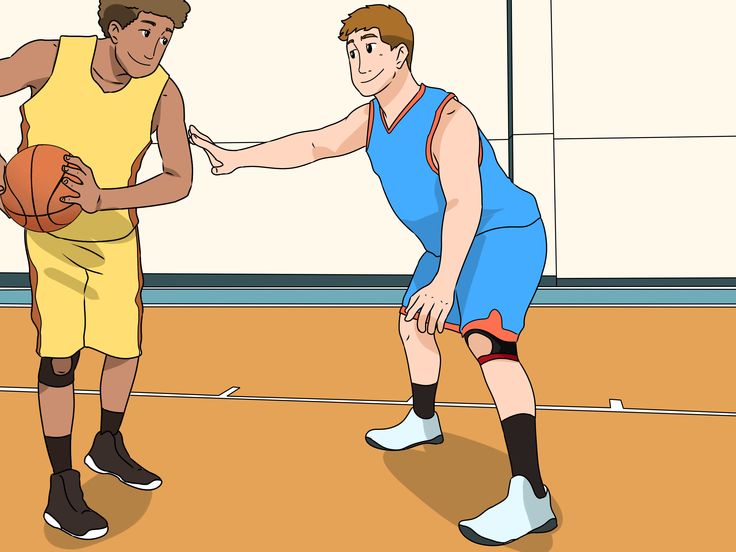 Basketball is a team game, and it is impossible without mutual assistance. But you need to insure your partner wisely, because when you switch from your player (or from your defense zone) when securing, you throw your player (or your site), and this is a free zone, that is, options for technically playing the ball in attack. Insure wisely, trying to outwit your opponent. For example, advance on an opponent who was being guarded by your partner but failed, and then, if you see that the opponent with the ball is trying to play an extra player, go back to your abandoned opponent and intercept the ball. In general, all this will come with experience.
Basketball is a team game, and it is impossible without mutual assistance. But you need to insure your partner wisely, because when you switch from your player (or from your defense zone) when securing, you throw your player (or your site), and this is a free zone, that is, options for technically playing the ball in attack. Insure wisely, trying to outwit your opponent. For example, advance on an opponent who was being guarded by your partner but failed, and then, if you see that the opponent with the ball is trying to play an extra player, go back to your abandoned opponent and intercept the ball. In general, all this will come with experience.
As a rule, for the very beginning basketball players, the coach does not choose pressing as a style of play in defense, because such a defensive action scheme requires very serious physical preparation and the most well-coordinated team actions. And at the initial level, amateur teams do not have such skills.
Well, perhaps the most correct and best advice is training.